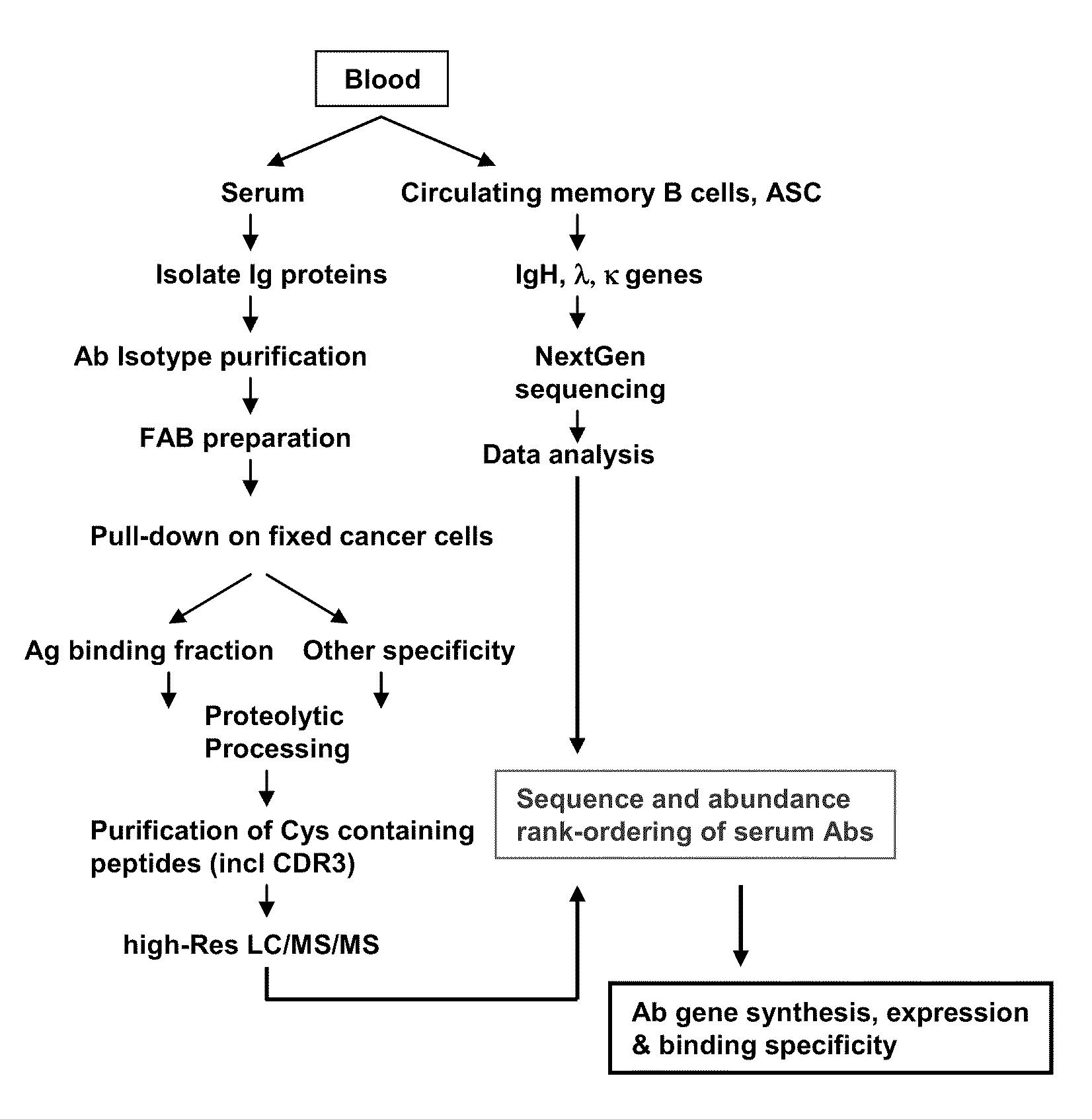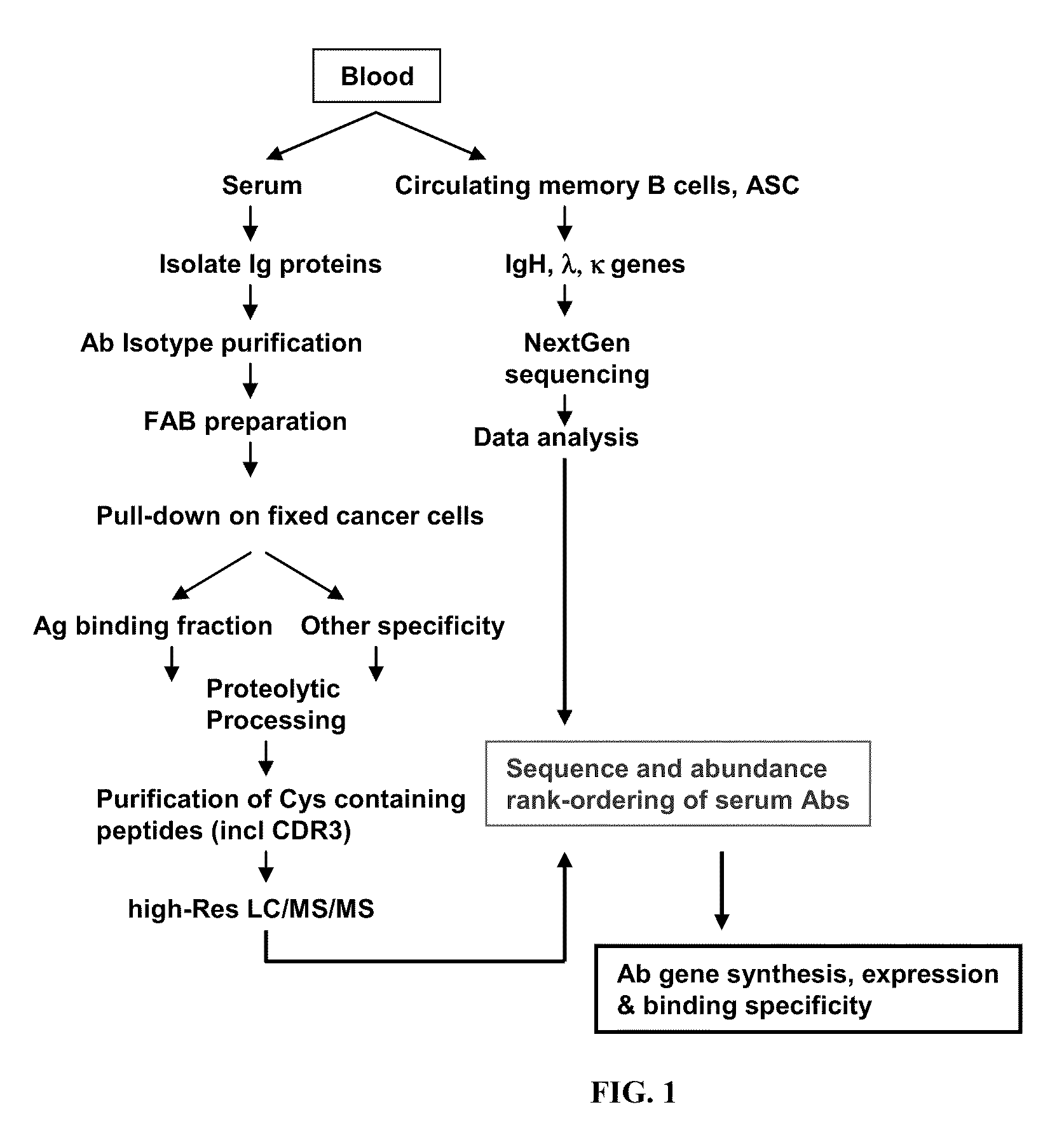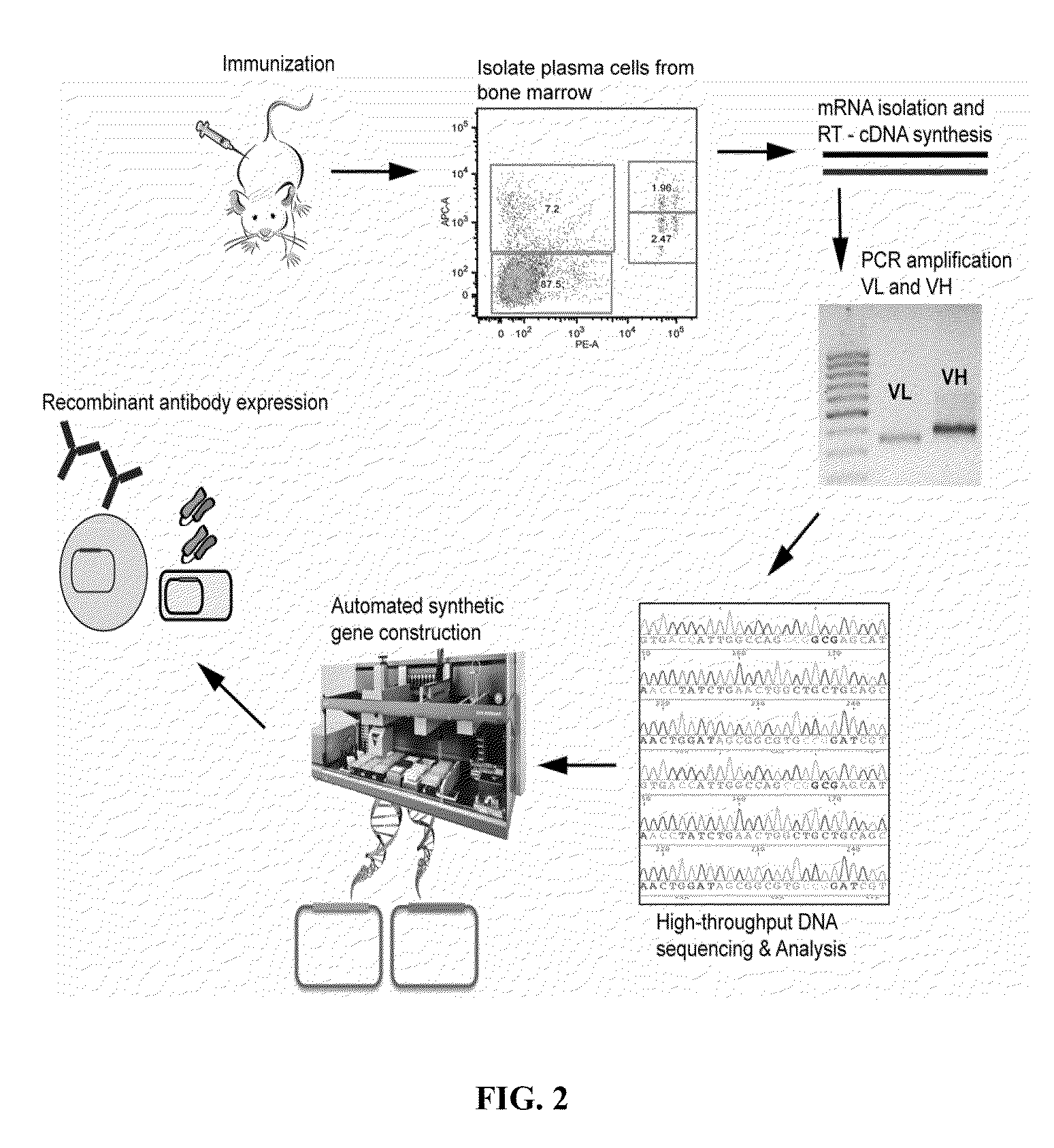Rapid isolation of monoclonal antibodies from animals
a monoclonal antibody and animal technology, applied in the field of rapid isolation of monoclonal antibodies from animals, can solve the problems of inability to detect important antibodies, inability to express important antibodies, and considerable technical complexity, and achieve the effect of being readily understandabl
- Summary
- Abstract
- Description
- Claims
- Application Information
AI Technical Summary
Benefits of technology
Problems solved by technology
Method used
Image
Examples
example 1
Immunization Protocol
[0178]Protein antigens (e.g., purified human complement protein C1s (CalBiochem), purified chicken egg ovalbumin (OVA, Sigma), or recombinant bacterially-expressed human B cell regulator of IgH transcription (BRIGHT) were resuspended in sterile-filtered phosphate buffered saline (PBS) at 1.0 mg / ml. On the day of primary immunization, 25 μl of antigen solution was thoroughly mixed with 25 μl of Complete Freund's Adjuvant (CFA, Pierce Biotechnology) and 50 μl of sterile PBS and stored on ice. Female Balb / c mice (Charles Rivers Laboratories) 6-8 weeks old were housed in conventional barrier space and were maintained on a normal chow diet. Prior to injections, mice were bled from the tail vein and approximately 25 μl of blood was collected and stored at −20° C. for later analysis. Day 1 was designated as the day primary immunizations were performed. 100 μl of the antigen-CFA mixture per mouse was injected with a 26-gauge needle subcutaneously into the backpad. Mice ...
example 2
Isolation of the Plasma Cell (CD138+CD45R (B220)−CD49b−) Population from Murine Bone Marrow
[0180]The muscle and fat tissue was removed from tibias and femurs harvested from immunized mice. The ends of both tibia and femurs were clipped with surgical scissors and bone marrow was flushed out with a 26-gauge insulin syringe (Becton Dickinson, BD). Bone marrow tissue was collected in sterile-filtered Buffer#1 (PBS / 0.1% bovine serum albumin (BSA) / 2 mM ethylenediaminetetracetic acid (EDTA)). Bone marrow cells were collected by filtration through a 70-um cell strainer (BD) with mechanical disruption and washed with 20 ml of PBS and collected in a 50 ml tube (Falcon, BD). Bone marrow cells were then centrifuged at 1200 RPM for 10 min at 4° C. Supernatant was decanted and cell pellet was resuspended with 3.0 ml of RBC lysis buffer (eBioscience) and shaken gently at 25° C. for 5 minutes. Cell suspension was then diluted with 20 ml of PBS and centrifuged at 1200 RPM for 10 minutes at 4° C. Sup...
example 3
Isolation of Antibody Secreting Cells (ASCs) and Memory B Cells
[0185]Murine memory B cells. Secondary lymphoid organs (spleen and lymph nodes) are harvested from immunized mice following euthanization. Tissue was collected in sterile-filtered Buffer#1 (PBS / 0.1% bovine serum albumin (BSA) / 2 mM EDTA). Splenic and lymph node cells were collected by filtration through a 70-um cell strainer (BD) with mechanical disruption and washed with 20 ml of PBS and collected in a 50 ml tube (Falcon, BD). Splenic and lymph node cells were then centrifuged at 1200 RPM for 10 min at 4° C. Supernatant was decanted and cell pellet was resuspended with 3.0 ml of RBC lysis buffer (eBioscience) and shaken gently at 25° C. for 5 minutes. Cell suspension was then diluted with 20 ml of PBS and centrifuged at 1200 RPM for 10 minutes at 4° C. Supernatant was decanted and cell pellet was resuspended in 1.0 ml of Buffer#1.
[0186]Additionally whole blood is extracted by cardiac puncture. Whole Blood is added to his...
PUM
| Property | Measurement | Unit |
|---|---|---|
| concentration | aaaaa | aaaaa |
| concentration | aaaaa | aaaaa |
| concentration | aaaaa | aaaaa |
Abstract
Description
Claims
Application Information
 Login to View More
Login to View More - R&D
- Intellectual Property
- Life Sciences
- Materials
- Tech Scout
- Unparalleled Data Quality
- Higher Quality Content
- 60% Fewer Hallucinations
Browse by: Latest US Patents, China's latest patents, Technical Efficacy Thesaurus, Application Domain, Technology Topic, Popular Technical Reports.
© 2025 PatSnap. All rights reserved.Legal|Privacy policy|Modern Slavery Act Transparency Statement|Sitemap|About US| Contact US: help@patsnap.com



